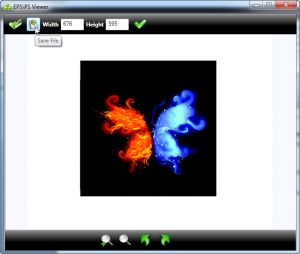 How to convert raster TIFF to DXF with RasterVect
How to convert raster TIFF to DXF with RasterVect
For those of you who are not familiar with the popular AutoCAD application, DXF (short for Drawing Exchange Format) is a graphics format that is mainly used for storing information about a two-dimensional (2D) image and was designed to exchange drawings between AutoCAD and other CAD software. On the other hand, TIFF is a well-known raster image format that is best suited for printing, as this type of file uses a lossless compression method to encode the data, therefore, retaining as much information about the picture as possible and maintaining the highest possible quality. However, altering TIFF files can prove to be quite a difficult process.
There are only a few CAD (Computer-Aided Design) applications that can import TIFF images for processing. Solidworks, for example, is one of these tools that can't open TIFF photos, so, finding a way to convert them into a format supported by almost all CAD tools, can come in handy. A simple solution for that problem is creating 2D DXF files from your TIFF images (you can also use CAD software and use the trace function to create a DXF, but it's more difficult/expensive).
I will demonstrate how to turn your TIFF image files into DXF graphics using the freeware RasterVect 16.0, designed by RasterVect Software. I use this application, because it offers a free and quite simple way to convert TIFF files to DXF format and it also offers some editing features which can prove to be quite useful.
Tutorial assets
You will need to download the following software to follow along with this tutorial.
Here are the steps that you will need to complete in order to convert your TIFF raster images to DXF format
Step 1
Open the TIFF image you want to convert (Click on the "Open" button from the menu bar or from the "File" menu)
Step 2
Start the image recognition process. You can either click on the "Recognition" button from the menu bar (the one with the lightning icon) or use the provided wizard that will guide you through the entire process.
Start the image recognition process
Step 3
Save the image as a DXF vector image to disk. In order to do that, you can either click on the "Save a vector image to disk" button from the menu bar, use the "Alt+V" key combination or go to "File" and select the "Save Vector" option (as shown in the picture below).
Save a vector image to disk
Conclusion
Congratulations! You have successfully created a DXF graphics file from a TIFF raster image. As you can see, the conversion process using the free version of RasterVect is not that complicated and, if you follow the guide, you shouldn't have any problems completing the task. If you are looking for more complex applications or other software, then check the list of related program presented below.
- Easy to use.
- Free.
- Image editing support.
- Image recognition wizard.
- Can convert to multiple types of vector formats.
- Some image recognition options not available in the free version.
Alternative downloads
-
 BackToCAD Converter
windows
Easy-to-use and powerful converter.
Download
BackToCAD Converter
windows
Easy-to-use and powerful converter.
Download
-
 Print2CAD 6th
Generation
$229
windows
Print2CAD 2015, 6th Generation that performs the conversion of PDF files to DWG/DXF and Vice Versa.
Download
Print2CAD 6th
Generation
$229
windows
Print2CAD 2015, 6th Generation that performs the conversion of PDF files to DWG/DXF and Vice Versa.
Download
-
 Scan2CAD
$174.30
windows
2-in-1 Raster to Vector and PDF to CAD conversion.
Download
Scan2CAD
$174.30
windows
2-in-1 Raster to Vector and PDF to CAD conversion.
Download






Is this the way you're trying to sell software? Why anyone can't be honest and MENTION that the "freeware" does NOT allow saving the converted file?